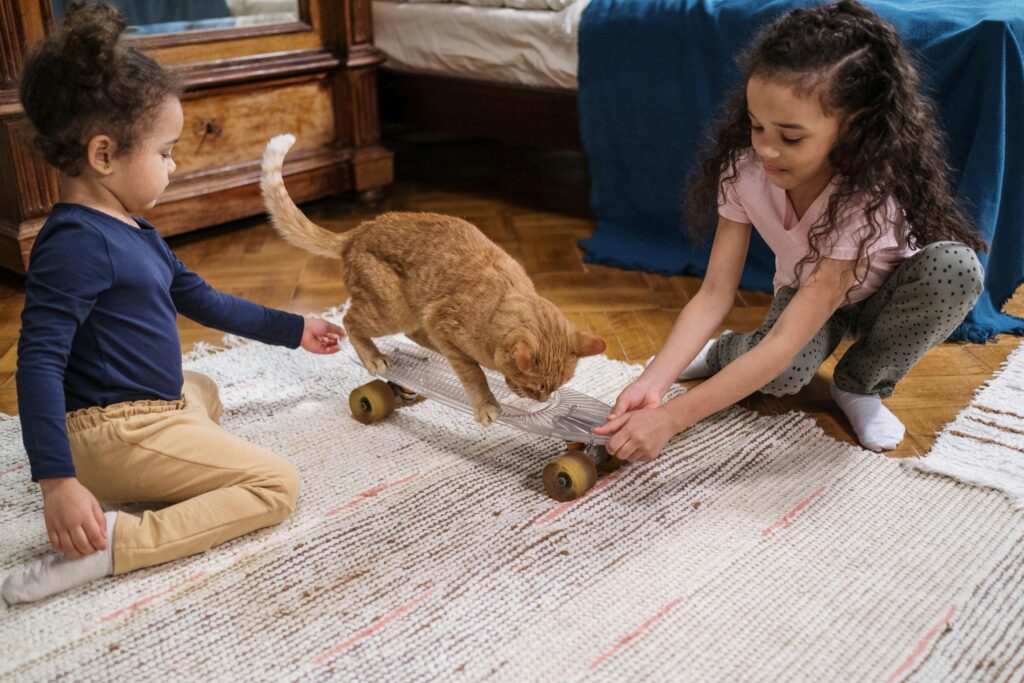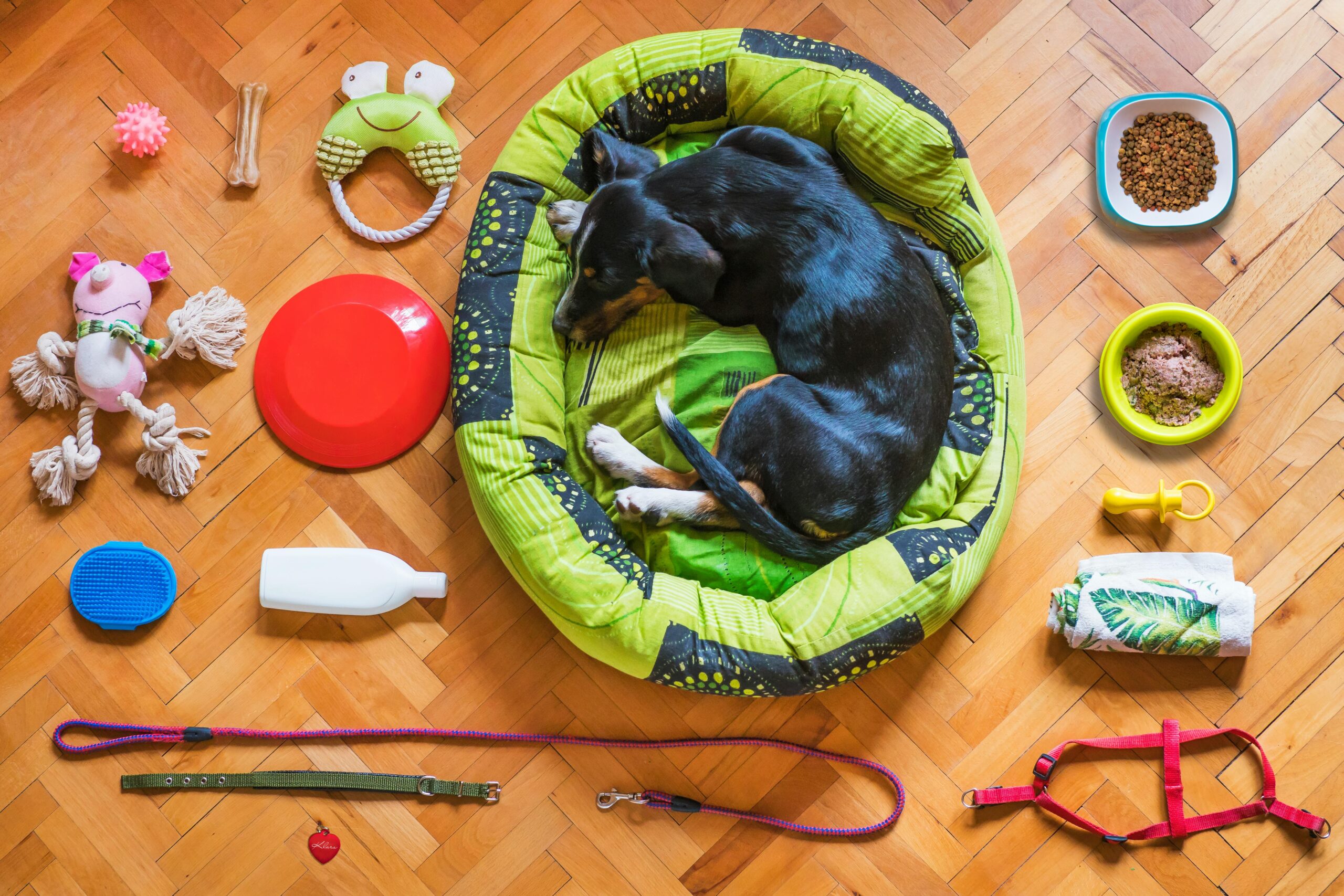Pets are members of family and, like humans, they require entertainment to remain content and healthy. Rather than buy store bought toys, why not create your own? They may be tailored to your pet’s needs, are reasonably priced, and are environmentally friendly. This book will walk you through making safe, imaginative, and entertaining toys for your furry pals.

Why Homemade Pet Toys Are a Great Idea
Cost Effective Option
Made made toys save money. Many can be created using things you already have in your house, including cardboard, old clothing, or leftovers.
Customizable for Your Pet
Toys catered to your pet’s tastes, size, and temperament will make sure they will truly appreciate using them.
Environmentally Friendly
Repurposing items helps you live sustainably by lowering waste.
Materials Needed for Homemade Pet Toys
Household Items
Look about your house for items including plastic bottles, cardboard boxes, and old socks. These are ideal for do it yourself projects including toys.
Safe and Non Toxic Supplies
To guarantee your animal friend stays safe, use pet friendly products include untreated wood, natural fibers, and non toxic glue or paint.
Tools and Equipment
When building toys, basic tools, including scissors, a sewing kit, or a hot glue gun, can be quite helpful.
Homemade Toys for Dogs
T Shirt Rope Toy
Cut an old T shirt into long strips.
Carefully tie the strips together.
For a robust tug toy for your dog, knot the ends.
For interactive games like tug of war and moderate gnawing, this toy is ideal.
Tennis ball treat dispenser
In an old tennis ball, cut a little slit.
Stuff your dog’s preferred treats right inside.
Let your dog work out the treat distribution.
This toy keeps your dog active and sharpens its ability to solve problems.
Plastic Bottle Cruncher
Knotted the open end of an old sock and nested a plastic bottle inside.
Remove any sharp edges and the bottle cap to stop choking or cuts.
Dogs enjoy the sound of crunching. Therefore, this is a basic but interesting toy.
Homemade Toys for Cats
Feather Wand
After fastening feathers to a thread, attach it to a dowel or stick.
Excite your cat by mimicking prey like motions with the wand.
Cats like to pursue and pounce; hence, this toy is perfect for energetic play.
Cardboard Maze
Cut little holes in the top and sides of a cardboard box.
Your cat can bat about a ball or tiny toy placed inside.
This puzzle toy stimulates the mind and promotes the hunting habit.
Sock Mouse Toy
Stuff catnip into an old sock and pack it with cotton or cloth scraps.
Either sew or knot the open end firmly.
Cats will go wild over this basic yet enticing toy.
Homemade Toys for Small Pets (Rabbits, Guinea Pigs, etc.)
Toilet Paper Roll Treat Holder
Fold one end closed on an empty toilet paper roll.
Load it with pellets, hay, or little goodies, then fold the other end.
This do it yourself device promotes natural foraging behavior and cerebral stimulation.
Hanging Chew Toy
Thread cardboard, apple branches, or treated wood pieces along a string.
Hang the toy in your pet’s cage so they may play with it and bite on it.
Chews toys fight boredom and assist in maintaining dental health.
DIY Hay Ball
Stuff a little waker ball filled with hay or leafy greens.
For a fun and nutritious snack, let your pet chew on and take out the treats.
Safety Tips for Homemade Pet Toys
Avoid Hazardous Materials
Avoid anything that could splinter, break readily, or include poisonous ingredients.
Supervise Playtime
Always keep an eye on your pet to make sure a new toy is safe and doesn’t cause choking problems.
Regularly Inspect and Replace Toys
Wear and tear should be checked for, and defective toys should be replaced to avoid injuries.
Creative Ideas for Interactive Play
DIY Obstacle Course
Arrange household objects, cushions, and cardboard boxes in your living room to create a little course.
Teach your animal to negotiate the course for rewards and treats.
Promoting fitness and connection, this pastime is fantastic for dogs, cats, and even bunnies.
Scavenger Hunt
Stow toys or goodies about the house.
Urge your pet to sniff and hunt for the secret goodies.
This game keeps your pet cognitively active and plays to their natural inclinations.
Frozen Treat Puzzle
Freeze treats are safe for pets, either inside a Kong toy or in an ice block.
Allow your pet to figure out how to access the treat.
Ideal for hot days, this exercise cools them off and offers entertainment value.
Benefits of DIY Pet Toys for Pet Owners
Strengthens the Bond
Making and using these toys will help you to spend more time with your pet, therefore enhancing your relationship.
Encourages Creativity
Making pet toys helps you to express your imagination and create original designs.
Saves Money Long Term
Reusing items and designing robust toys will greatly reduce pet costs.
FAQs About Homemade Pet Toys
Are homemade pet toys safe?
Indeed, provided you choose pet safe and non toxic materials, Throughout the play, constantly watch over your pet to guarantee their safety.
What are the best materials for homemade toys?
Perfect are soft fabrics, untreated wood, cardboard, and non toxic glue. Steer clear of quickly breakable or pointy objects.
How can I make toys for aggressive chewers?
Choose strong materials include rubber, thick ropes, or tough cloths. Steer clear of everything fit for shredding or swallowing.
Additional Tips to Promote Your DIY Pet Toys Blog
These techniques, specifically for SEO and audience involvement, will help you maximize natural traffic and guarantee your blog reaches a broad audience:
Optimize for Search Engines
Use Relevant Keywords
Naturally, weave high ranking keywords like “easy homemade pet toys,” “safe DIY pet toys,” and “eco friendly pet toys” throughout your work. Add them to headings, subheads, and picture alt text.
Create Engaging Meta Descriptions
Create for your blog content succinct, interesting meta descriptions. For dogs, cats, and tiny animals, for instance, find simple, innovative DIY pet toys here. Save money, cut waste, and maintain happy furry buddies!
Add Internal and External Links
Link to additional pertinent blog entries including “Healthy Treat Recipes for Pets” or “How to Train Your Dog at Home.” Consult reliable outside sources on pet safety or do it yourself crafts techniques.
Leverage Visual Content
Include Step by Step Photos
the toy making process will help your blog look better and be more easily navigable. Readers may be inspired by pets loving the completed toys.
Create Video Tutorials
Short, interesting movies showing how to build these gadgets will greatly increase visitors. Post them on websites like YouTube and include them in your blog.
Use Eye Catching Infographics
Using an aesthetically pleasing infographic that readers might quickly share, summarize the processes or advantages of handmade pet toys.
Engage with Your Audience
Encourage Comments and Sharing
In the comment section, have readers submit their own handmade pet toy ideas or experiences. For instance: “Have you ever experimented with homemade cat toys? Leave us in the comments your original ideas or pictures.
Host Contests or Challenges
Plan a “DIY Pet Toy Challenge” in which readers may send pictures of homemade toys. Show the greatest ones on your blog or social media.
Respond to Questions
Respond quickly to reader comments to create a devoted community and trust.
Promote on Social Media
Share Across Platforms
Share quick bits of your work on Facebook, Pinterest, and Instagram. Boost visibility with hashtags such as #DIYPetToys, #HomemadeDogToys, and #PetParentHacks.
Collaborate with Influencers
Showcase your products and blog by working with pet influencers. Their shout out can generate a lot of traffic to your website.
Start a Pinterest Board
Pinterest is perfect for home projects. Make a special board for “Homemade Pet Toys” and pin your blog post and any pertinent suggestions.
Regularly Update Content
Add New Ideas Periodically
Add seasonal do it yourself pet toy ideas holiday themed toys or summer cool down toys to keep your blog interesting.
Analyze Performance with SEO Tools
Track which areas of your blog provide good performance and improve underperforming areas using Google Analytics or SEMrush.
Long Term Benefits of a DIY Pet Toy Blog
Builds a Loyal Audience
Pet owners search constantly for reasonably priced methods of pet care. Continually offering useful material can help you build a community of returning readers.
Opens Revenue Opportunities
Advertisements, pet supply affiliate links, or an eBook on “Ultimate DIY Pet Toy Ideas” will monetize your blog. You might also market kits with tools for toy manufacture.
Positions You as an Authority
As your blog develops, you will become a reliable source in the pet care market, drawing chances for joint ventures and cooperation.
Conclusion
Making homemade pet toys offers an opportunity to connect with your animals and help their welfare in addition to being a leisurely, frugal hobby. Sharing these original ideas and advice on your blog will increase your internet profile and aid fellow pet owners all around.
